By Jay Sorensen
So, the Question Formulation Technique (QFT) isn’t necessarily a technology-related tool. It can be done with no more than pencil and paper. Of course, you can enhance it by bringing in videos, or using VR for your Q-focus, or holding an online discussion of questions. But I think of the QFT as tech-related in a different way: it requires a mindset shift, on the part of both teachers and students.
As a Coordinator of Educational Technology in the Oxnard Union High School District, I am in charge of professional development as it relates to technology. In this position, I often talk to teachers who are nervous about using new technology, either for themselves or with their students. Colleagues tell me making a shift to student-centered inquiry-based learning can feel similarly unsettling or risky. It’s easy, one colleague recently reflected, to be “anxious about relinquishing control—giving students choice is not cookie cutter so it can go in so many directions…not being the expert can be scary.”
M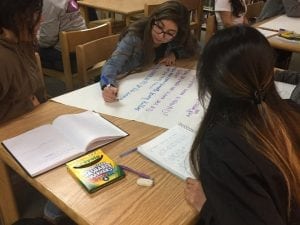 any teachers hear buzzwords like project-based learning, blended learning, a flipped classroom, and inquiry and often, even those who are interested, don’t know where to start. That is why I love the QFT. It is very teacher- and student-friendly. It is not intimidating as some of those other strategies can be. It is a perfect place to start.
any teachers hear buzzwords like project-based learning, blended learning, a flipped classroom, and inquiry and often, even those who are interested, don’t know where to start. That is why I love the QFT. It is very teacher- and student-friendly. It is not intimidating as some of those other strategies can be. It is a perfect place to start.
The beauty of the QFT is its simplicity. It is a fairly simple, easy-to-follow process that is accessible to all teachers and students. I have seen it successfully implemented in classes with a wide range of students including special education students and English Language Learners. It is a great equalizer for students of all levels because all are engaged and actively participating. And as a district of about 17,000 students, including high percentages of English Language Learners and students from economically-disadvantaged backgrounds, it’s essential that we use tools and strategies that challenge all students.
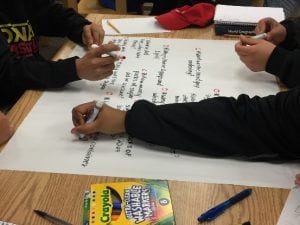
I’ve observed the QFT across the high school including math, engineering, English, ELD, and AVID (a college readiness program) classes. With my formidable and creative colleagues Kimberly Tashuda and Jenn Brickey leading professional development and innovation with the QFT, I have also seen it spread from just a couple classes at Oxnard High School to classrooms in other schools and districts in the region.
While simple, the QFT represents the start to a larger shift in pedagogy. It is a fairly student-centered activity. The teacher still plays a major role, but it is more as a facilitator than the expert lecturer. The teacher designs the Q-focus and explains the rules. They guide the students through the process and facilitate the conversations. But then, the teacher takes a step back and the students do the heavy lifting. Many of my colleagues found this shift enjoyable:
“Personally, I remember how empowering it was when I realized I didn’t have to be the expert, even the expert in how to figure something out. When I began to take on more of a facilitative role, this huge weight lifted from my psyche.”
“This really comes down to environment and fostering a culture of learning for everyone, especially teachers.”
But the QFT is really about the students. It’s about the students creating and reflecting on their questions. It’s about them listening and collaborating with their classmates. It’s about them communicating their thoughts and ideas. It’s about metacognition and critical thinking. All within a very easy-to-do process that fits within a 60-minute period which is perfect in a high school setting. Students report:
“It really pushes you to elaborate your thinking. You find that your ideas can become stronger…It brings you out of your shell and reduces anxiety.”
“I think it helps us build higher level questions. When we go over our questions and try to make them better, it helps us think. The questions help us dig deeper and go beyond basic facts. It prepares us for the future and being in front of audience.”
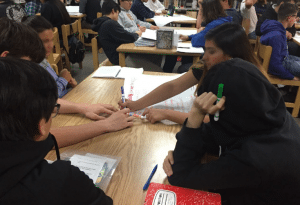
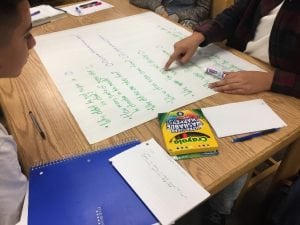
So what’s an Ed tech guy doing teaching and promoting the QFT? Like the best educational technology, the QFT acts as a powerful tool that challenges students to create and explore in new ways. And once teachers take the first step towards student-centered learning, they’re amazed at what their students are capable of.
As a colleague of mine wrote about the QFT, it’s “a deceptively simple set up: Let the students think about a topic before they dive in! Each time… high level questioning, academic discussion, and empowerment result. Given the opportunity to think, and present those thoughts, without fear of judgement, students unfailingly rise to the challenge.”
Author Bio
Jay Sorensen is a former elementary school, middle school computer, and a technology teacher on special assignment before becoming Coordinator of Educational Technology at Oxnard Union High School in Oxnard, CA. Jay has presented at the regional and national CUE Conference, EdLeader 21, the Patrick Suppes Personalized Learning Symposium, and many EdCamps and other regional technology colloquiums. You can find him on twitter @MrSorensen805.



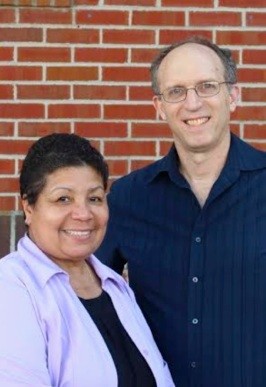
Speak Your Mind